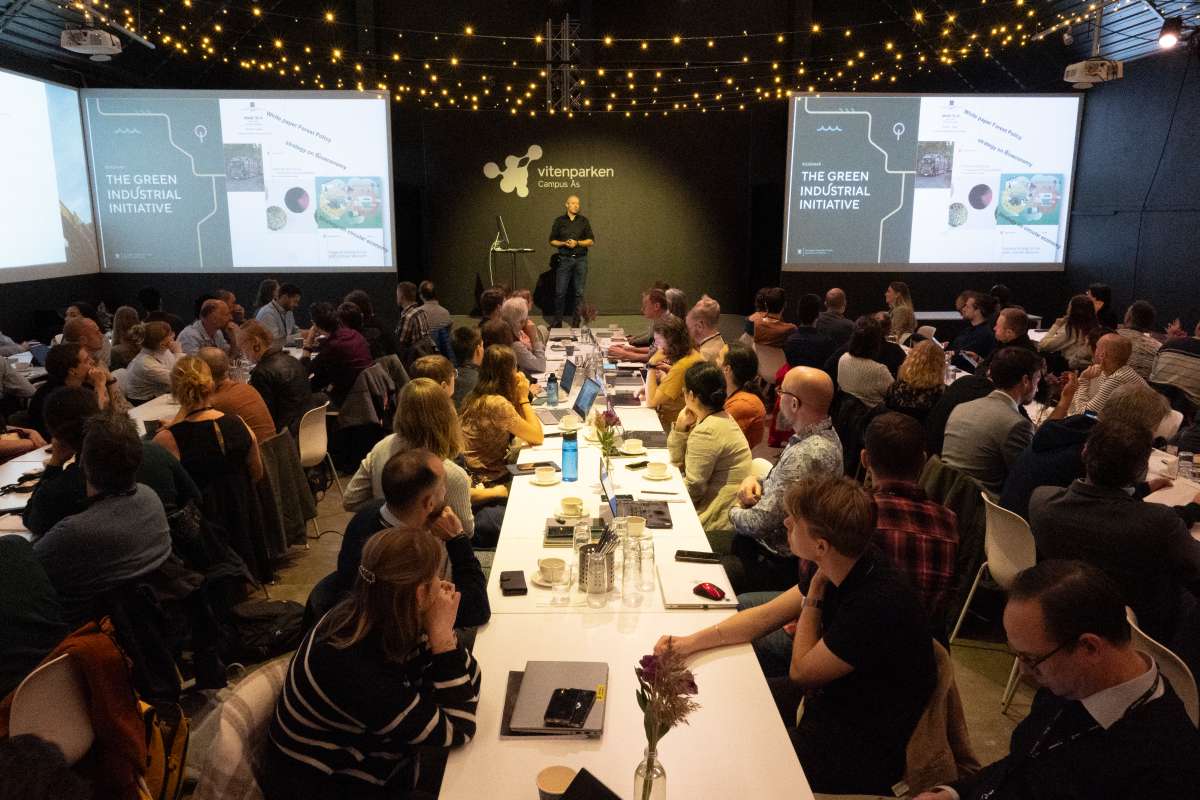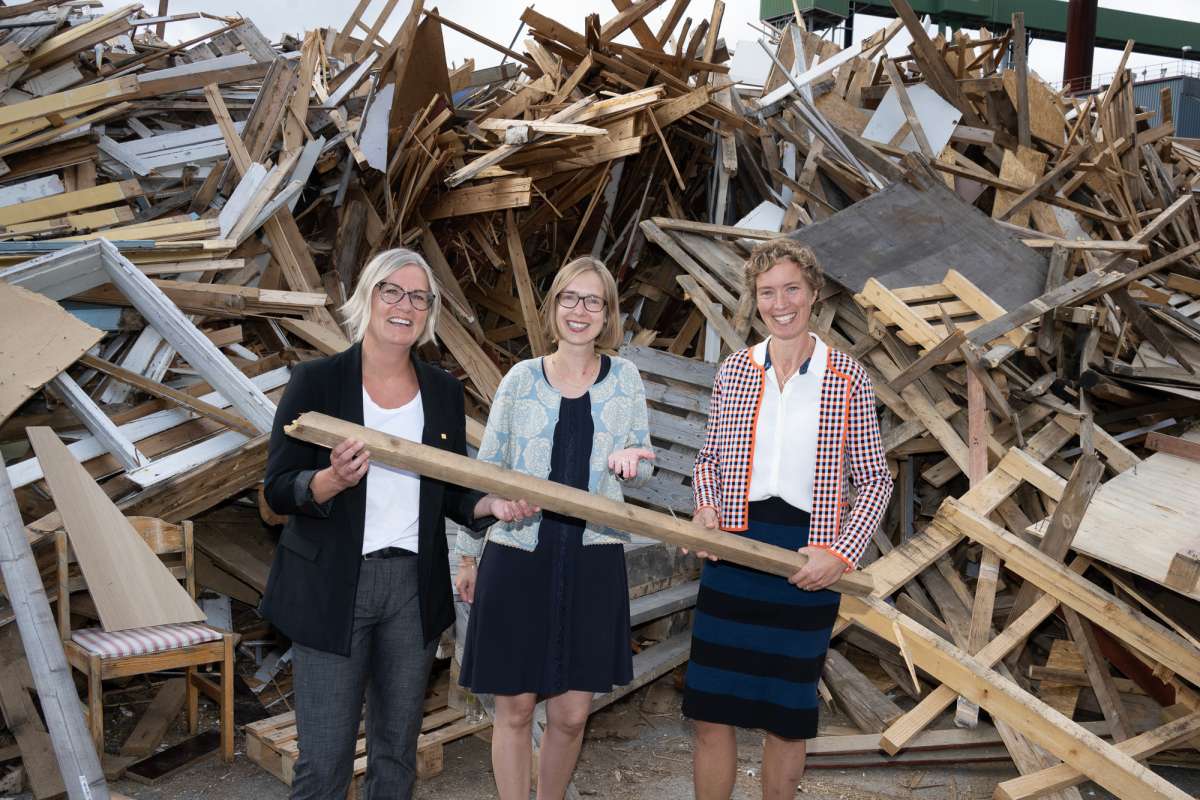New environmentally friendly wood fiber boards
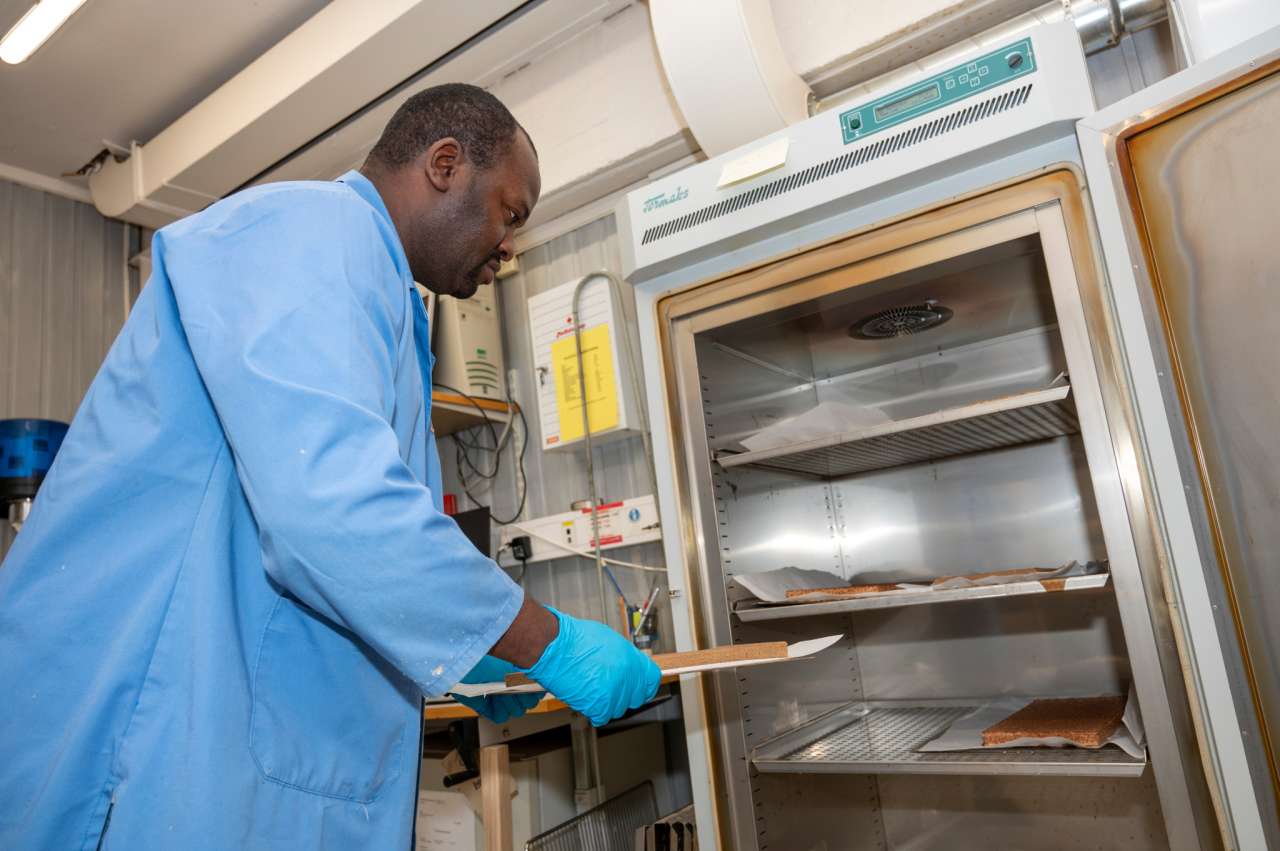
NIBIO researcher Stephen Amiandamhen is a specialist in wood products and has been investigating wood fiber boards for many years. Now, he is in the process of developing new, environmentally friendly wood fiber boards. The new wood fiber boards have been named PhosBoard. Photo credit: Lars Sandved Dalen, NIBIO
What if residual materials from the wood processing industry could be used to create new, environmentally friendly wood fiber boards that are light, insulating, and fire-retardant? NIBIO's wood scientists are on the case.
NIBIO’s wood scientists are keen to contribute to a circular economy. By systematically improving the various links in the wood material value chain – from the trees in the forest to finished wood products – the goal of the wood researchers is for residual materials from one production to be used as raw materials in the production of another product.
NIBIO wood scientist Stephen Amiandamhen is a specialist in wood products and has been researching wood fiber boards for many years.
"Our partners are looking for new uses for their wood products," Amiandamhen says.
One of his research goals is to get more companies to use residual materials, or waste, in more valuable products, such as wood fiber boards. Just recently, the Norwegian Research Council and Ard Innovation have contributed money and support to help realize Amiandamhen’s research dream.
It all started when Amiandamhen and his colleagues at NIBIO wanted to test whether wood chips and other residual materials from local sawmills in Eastern Norway could be used with a new type of glue, to create a more environmentally friendly, and simultaneously fire-retardant wood fiber board.
"In the beginning, we used a regular kitchen machine to mix the different ingredients," says Amiandamhen and laughs.
"After a while the production facility became too small, but now – with the support from the Research Council – we can scale up the test production quite a bit."
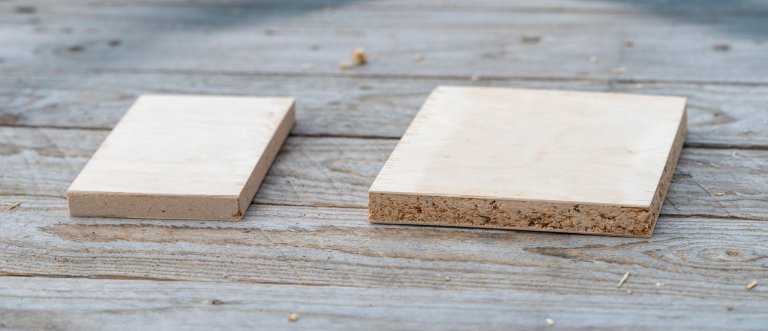
New wood fiber boards without formaldehyde
A challenge when it comes to the production of wood fiber boards has been that the binder, or glue, that holds the wood fibers together – such as in chipboards – has often been both environmentally harmful and energy-intensive to produce.
"In the production of fiber boards, such as chipboards or MDF boards, a lot of glue is usually used. And this glue usually contains formaldehyde. We wanted to develop fiber boards using glue without formaldehyde, and which can be produced using less energy. This produces boards with a lower environmental and climate footprint," Amiandamhen explains.
In addition to the wood fiber boards being both light and insulating well, it is very important that they are also fire-retardant. This is an aspect of the new product that the wood technologists at NIBIO are developing and researching a lot.
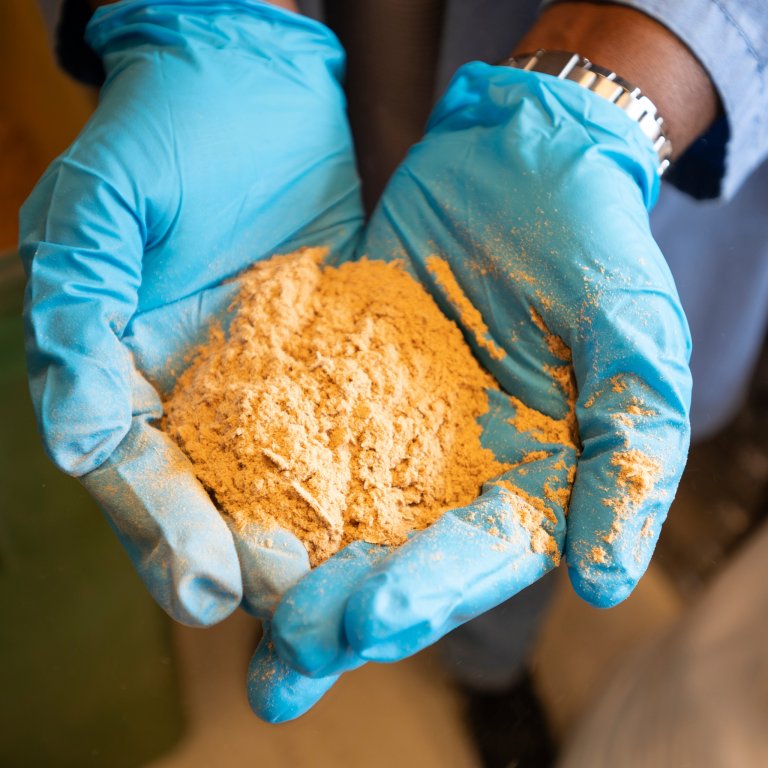
PhosBoard – the innovation project of the month
The new wood fiber boards have been named PhosBoard. Just recently, PhosBoard was named the innovation project of the month by Ard Innovation – a technology transfer company linked to Campus Ås, owned by The Norwegian University of Life Sciences (NMBU) and the Norwegian Institute of Bioeconomy Research (NIBIO).
"The researchers from NIBIO work closely with the business community in this project, and we at Ard Innovation believe that PhosBoard will deliver good, innovative solutions to the wood processing industry," says Johann Eksteen at Ard Innovation.
In addition, the PhosBoard project was recently rewarded with NOK 500,000 in so-called qualification funds from the Norwegian Research Council.
"The qualification funds will be used to further improve the composition of the PhosBoard boards, and at the same time it gives us the opportunity to examine the commercial potential of the fiber boards," NIBIO researcher Stephen Amiandamhen says.
Less energy consumption and a better working environment
Stephen Amiandamhen states that reduced environmental impact is one of the key advantages of the newly developed fiber boards.
"The PhosBoard boards are more sustainable. They contain renewable materials, and the production itself consumes less energy."
"In addition, the PhosBoard fiber boards will contribute to a better indoor climate. We do not use formaldehyde, which means that the air quality becomes better. This provides a better working environment," says Amiandamhen.
One of the challenges in developing the new wood fiber boards has been to ensure that the fire-retardant properties are retained without affecting the boards' density and physical-mechanical properties.
"The new fiber boards have physical and mechanical properties that give them good fire-retardant properties, and the boards are also well suited for use in a humid environment.
"In further analysis, we will test the fiber boards' sound insulating abilities and how they transfer heat," Amiandamhen says.
Contacts

Links
More about the projectPhosboard
PhosBoard is the name of a new type of environmentally friendly wood fiber board based on residual materials from the wood processing industry. The goal of PhosBoard is to contribute to the circular economy, by using recycled wood fiber from the wood processing industry, as well as other wood waste, in its production.
Usually, when making wood fiber boards, one relies on glue made from fossil sources, formaldehyde (which is carcinogenic) and not least, a production process that is very energy intensive. All of these contribute to environmental degradation and the emission of greenhouse gases.
The goal with PhosBoard is to use sustainable and renewable materials in a production process that requires less energy. In this way, the environmental impact usually associated with the production of fiber boards is minimized. A production process without formaldehyde could also contribute to better indoor air quality and thus a safer working environment.
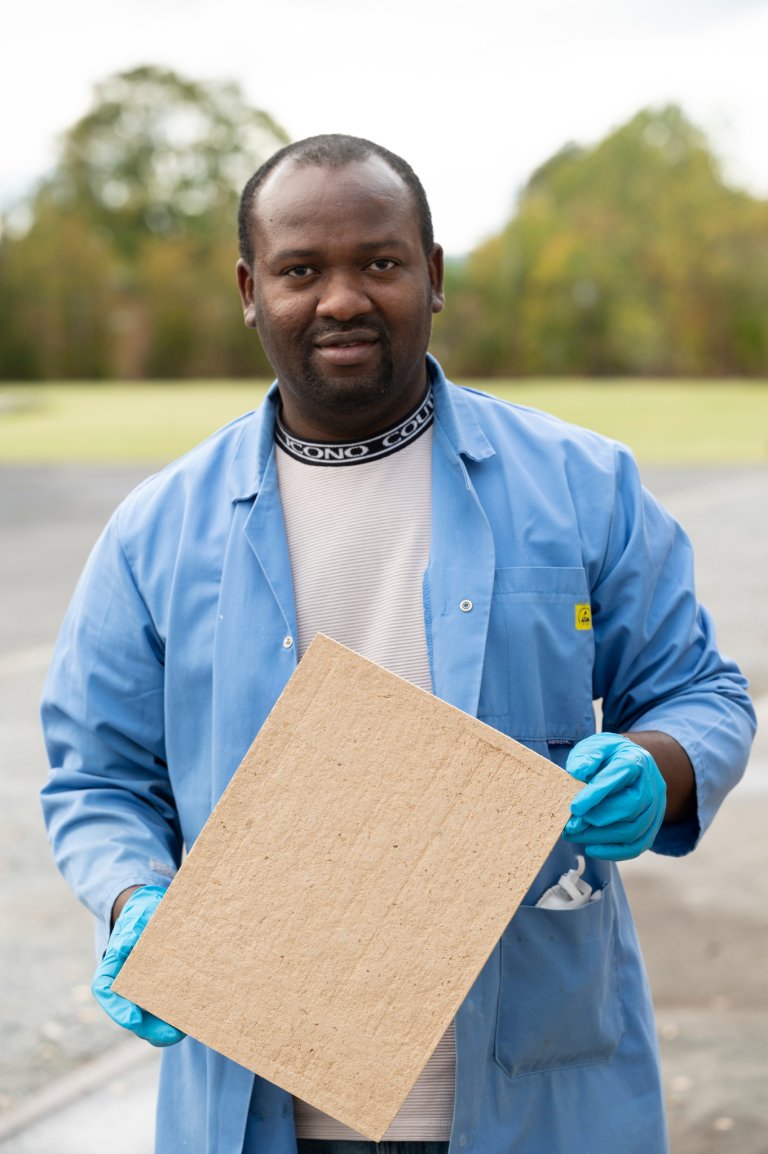
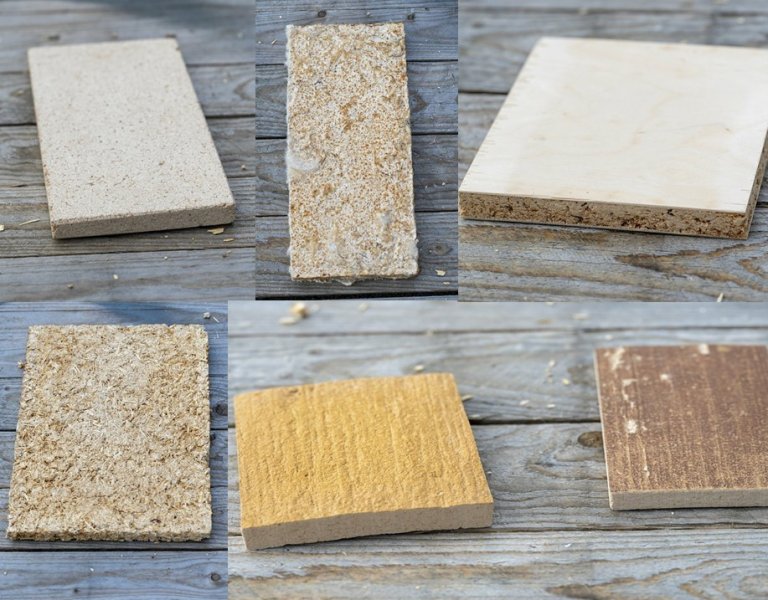
Contacts


